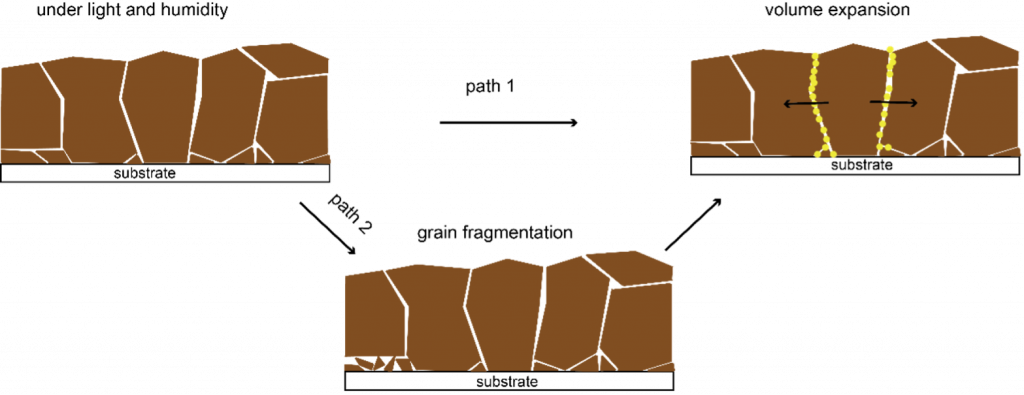New insights into perovskite solar cells degradation
|Solar cells – also called photovoltaic cells – are devices that convert sunlight energy into electricity, potentially representing an inextinguishable source of clean energy. They are typically named after the semiconducting material they are made of, and one of the most promising one, in terms of power conversion efficiency, is perovskite. However, although efficient, perovskite-based devices appear to be not particularly resistant when exposed for long periods to particular external agents, such as direct sunlight itself and high humidity (a factor that severely limits their potential application, for example, in the production of photovoltaic panels), and mechanisms underlying their morphology degradation have been poorly studied so far.

That’s why Kun Sun, Prof. Peter Müller-Buschbaum, Dr. Sigrid Bernstorff and colleagues of the TUM School of Natural Sciences investigated the operational stability of PSCs and their morphology evolution under illumination and humidity (75 ± 5%), using in operando grazing-incidence small-angle X-ray scattering technique available at the CERIC Austrian SAXS beamline at the Elettra Synchrotron in Trieste.
They then discovered that volume expansion within perovskite grains, induced by water incorporation, initiates the degradation of PSCs under light and humidity and leads to the degradation of device performance (regarding especially the so called fill factor – the maximum possible power output of a solar cell divided by its actual power output – and the short-circuit current). Moreover, analyzing the microstructure of PSCs with modified buried interface, they have shown that these devices degrade faster, which could be due to grain fragmentation and increased grain boundaries.
This detailed explanation of the changes in PSCs microstructure due to light and humidity could pave the way to the development of more resistant devices, with increased operational stability and average lifespan, that could then represent an increasingly effective alternative to traditional and more polluting energy sources.
ORIGINAL ARTICLE:



